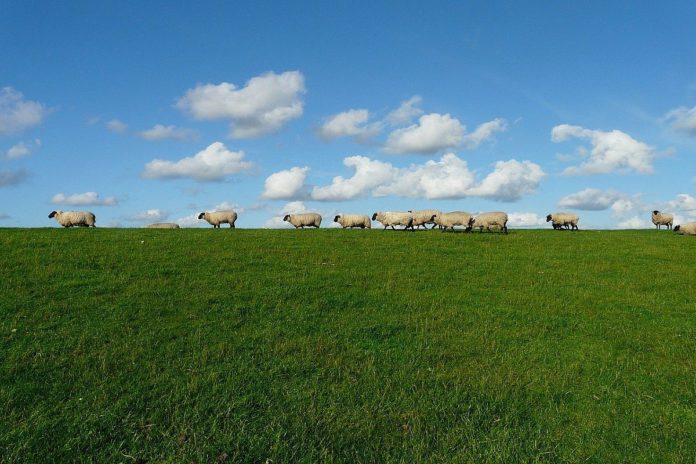Lambing in Ireland got off to a difficult start this year, due to a poor end of last year and a wet start to this year, writes Colm Murray, B&T Drystock Advisor, Teagasc Galway/Clare.
The monthly rainfall for November and December has been 111.4m and 144.3 millimetres respectively.
February 2020, in particular, was an exceptionally wet month with 248.5 millimetres of rain in Athenry. This has been a huge increase from February 2019 with rainfall of 73.5 millimetres.
As a result of all this, our sheep have been housed inside for longer than what is normal. This poor weather has brought its own issues for sheep farmers.
Below are some of the issues that have arisen;
Footrot:
Most footrot cases in Ireland are caused by bacterial infections that spread rapidly in our warm, wet, temperate climate. This has been further compounded this year by ewes being housed for so long, causing a spread of Foot Rot.
Ewes were housed early last year due to weather. It has also been difficult to get ewes and lambs out after lambing. Foot Rot is a painful disease and can make sheep very lame. It is characterised by its foul smell.
A prevention for this disease that farmers can implement is to foot bath. For housed sheep, it is good practice to use hydrated lime around feeders and troughs, when indoors. However, if you have already been affected by Foot Rot, the most effective intervention is to prevent it from spreading.
The farmer has to remove the affected sheep to reduce the circulation of bacteria and treat them with antibiotics. If the disease becomes prevalent in the same ewes every year, culling is an option.
Any new sheep that are brought into the farm should be quarantined for a period from the rest of the flock. This is to prevent the spread to more ewes and lambs. The target for farmers is to have less than 5% of sheep in your flock lame at any one time.
Joint-Ill:
Another problem common on farms this year, as a result of the poor weather, is Joint Ill. This disease occurs in young lambs. It is a bacterial infection that can be picked up, most commonly, through the navel or through the mouth.
It causes a swelling of the navel and affected joints can become hot, swollen and painful. Lambs can appear slow to move, dull and in discomfort. It is caused by dirty conditions and can be prevented by keeping lambing pens as clean and dry as possible.
It is good practice for the farmer to maintain a clean environment, using lime and providing plenty of straw. Navels should be dipped in Iodine promptly after birth. Dipping is considered more successful than spraying.
Ensure that lambs receive colostrum on time as this can help lambs fight the infection. Poor weather can also trigger stress in lambs which can then cause an outbreak. Affected lambs can be treated with antibiotics. Farmers should talk to their vets about treatment with antibiotics.
Tetany:
Tetany is found in ewes that have a deficiency in Magnesium. Sheep that have Tetany often tremble and can seem to twitch. They become sensitive to touch, appear uncoordinated in their walk and even have spasms. Without treatment, they will die.
Normally, ewes need to consume 1-2g per day of Magnesium. This increases to 3-5g per day in adverse weather conditions. Supplementation can be in the form of high, Magnesium mineral lick buckets, concentrate supplements (containing CalMag) where grass is tight, Magnesium bullets or pasture dusting.
Treatment for Grass Tetany is to give the affected sheep an injection of 100ml of Magnesium under the skin. If treated in time, the ewe recovers quickly.





